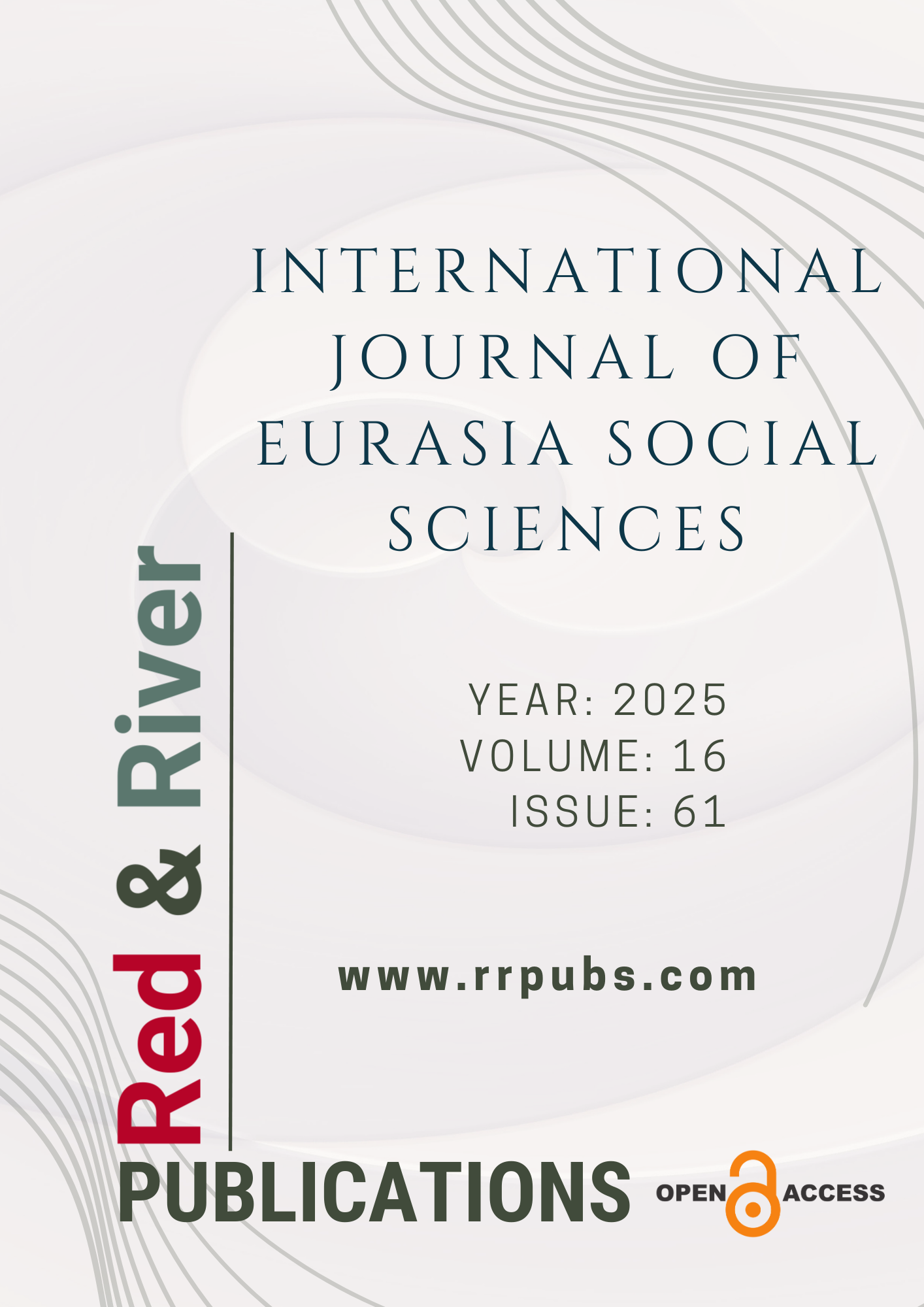Optimizing palliative home healthcare: A routing and scheduling model with emotional burden and patient-caregiver preferences
DOI:
https://doi.org/10.70736/ijoess.1998Keywords:
Palliative Care, Healthcare Logistics, Emotional Burden, Optimization, MILPAbstract
The increasing demand for personalized and human-centered care in home-based palliative services necessitates efficient yet empathetic healthcare logistics solutions. This study addresses the Palliative Home Healthcare Caregiver Routing and Scheduling Problem with Emotional Consideration (PHHCRSP-E), aiming to optimize the daily assignment and routing of nurses visiting patients in home-based palliative care. The model minimizes a weighted sum of total travel time and emotional imbalance among nurses, subject to operational constraints such as service durations, time windows and nurse workload limits. A mixed-integer linear programming (MILP) formulation is proposed, incorporating subtour elimination and emotional burden balancing. The model is implemented on a synthetic dataset consisting of five patients and two nurses, with each patient characterized by spatial coordinates, service requirements, time preferences, and an emotional burden score. Results demonstrate the model’s capability to provide feasible and balanced nurse–patient assignments while respecting logistical and psychosocial constraints. By embedding emotional dynamics directly into care planning, this study contributes a novel and human-centered perspective to healthcare logistics and supports more empathetic, data-driven decisions in palliative home care services.
References
Atta, S., Basto-Fernandes, V., & Emmerich, M. (2025). A concise review of home health care routing and scheduling problem. Operations Research Perspectives, 15, 100347. https://doi.org/10.1016/j.orp.2025.100347 DOI: https://doi.org/10.1016/j.orp.2025.100347
Busquet-Duran, X., Mateu-Carralero, B., Bielsa-Pascual, J., Milian-Adriazola, L., Salamero-Tura, N., & Torán-Monserrat, P. (2024). Systemic strengths and needs in palliative home care: exploring complexity. Revista Clínica Española (English Edition), 224(1), 1-9. https://doi.org/10.1016/j.rceng.2023.12.004 DOI: https://doi.org/10.1016/j.rceng.2023.12.004
Crape, B., Akhmetova, M., Akhmetniyaz, P., Foster, F., Nadyrov, K., & Toleubekova, L. (2024). Number of palliative care nurse home visits and duration of palliative care associated with domains of the good death inventory: A National survey of bereaved family caregivers in a middle income country. International Journal of Nursing Studies Advances, 7, 100217. https://doi.org/10.1016/j.ijnsa.2024.100217 DOI: https://doi.org/10.1016/j.ijnsa.2024.100217
Erel, B., & Tural-Büyük, E. (2021). The effect of emotional labor levels on the attitudes of neonatal intensive care nurses towards palliative care. Journal of Medicine and Palliative Care, 2(2), 40-46. https://doi.org/10.47582/jompac.887579 DOI: https://doi.org/10.47582/jompac.887579
García-López, I., Chocarro-González, L., Martín-Romero, I., Vázquez-Sánchez, J. M., Avilés-Martínez, M., & Martino-Alba, R. (2023). Pediatric palliative care at home: a prospective study on subcutaneous drug administration. Journal of Pain and Symptom Management, 66(3), e319-e326. https://doi.org/10.1016/j.jpainsymman.2023.05.011 DOI: https://doi.org/10.1016/j.jpainsymman.2023.05.011
Huu, P. H., & Gandhi, I. (2025). Strategies to enhance palliative care access in rural populations and increase awareness of life-limiting illnesses in India: A scoping review. Journal of Cancer Policy, 45, 100612. https://doi.org/10.1016/j.jcpo.2025.100612 DOI: https://doi.org/10.1016/j.jcpo.2025.100612
Isenberg, S., Hsu, A., Spruin, S., Budhwani, S., Gill, A., Goldman, R., & Tanuseputro, P. (2019). Evaluating the impact and costs of home-based palliative care at the system level (FR420C). Journal of Pain and Symptom Management, 57(2), 410. https://doi.org/10.1016/j.jpainsymman.2018.12.122 DOI: https://doi.org/10.1016/j.jpainsymman.2018.12.122
Jersak, T., Steinfeldt, L., Velasquez, A. L., Ellis, K. L., Gunya, E. K., Brooks, J. V., … et al. (2024). Development of specialty-based pediatric palliative care clinics. Journal of Pain and Symptom Management, 67(5), e596. https://doi.org/10.1016/j.jpainsymman.2024.02.412 DOI: https://doi.org/10.1016/j.jpainsymman.2024.02.412
Kumar, S., Kumar, S., & Shiwlani, A. (2025). Machine learning for labor optimization: A systematic review of strategies in healthcare and logistics. Pakistan Social Sciences Review, 9(1), 631-651. https://doi.org/10.35484/pssr.2025(9-I)48
Mercadante, S., Tartaglia, L., Cascio, A. L., & Casuccio, A. (2025). Practice of palliative sedation in patients followed by a palliative home care team. Journal of Pain and Symptom Management, 69(6), 598–602. https://doi.org/10.1016/j.jpainsymman.2025.02.469 DOI: https://doi.org/10.1016/j.jpainsymman.2025.02.469
Migiddorj, B., Batterham, M., & Win, K. T. (2025). Systematic literature review on the application of explainable artificial intelligence in palliative care studies. International journal of medical informatics, 200, 105914. https://doi.org/10.1016/j.ijmedinf.2025.105914 DOI: https://doi.org/10.1016/j.ijmedinf.2025.105914
Özçelik, S. (2020). Palyatif bakıma bakış ve hemşireliğin rolü. Journal of Medicine and Palliative Care, 1(3), 76–82. https://doi.org/10.47582/jompac.742274 DOI: https://doi.org/10.47582/jompac.742274
Parreno-Torres, C., Reula, M., Alvarez-Valdes, R., & Parreño, F. (2024). Solving the palliative home health care routing and scheduling problem with an integer linear programming model. Expert Systems with Applications, 249, 123728. https://doi.org/10.1016/j.eswa.2024.123728 DOI: https://doi.org/10.1016/j.eswa.2024.123728
Pask, S., Murtagh, F. E., & Boland, J. W. (2025). Palliative care–what’s the evidence?. Clinical Medicine, 25 (4), 100320. https://doi.org/10.1016/j.clinme.2025.100320 DOI: https://doi.org/10.1016/j.clinme.2025.100320
Ritchie, C. S., & Leff, B. (2018). Population health and tailored medical care in the home: the roles of home-based primary care and home-based palliative care. Journal of Pain and Symptom Management, 55(3), 1041-1046. https://doi.org/10.1016/j.jpainsymman.2017.10.003 DOI: https://doi.org/10.1016/j.jpainsymman.2017.10.003
Sítima, G., Galhardo-Branco, C., & Reis-Pina, P. Equity of access to palliative care: a scoping review. International Journal for Equity in Health, 23, 248 (2024). https://doi.org/10.1186/s12939-024-02321-1 DOI: https://doi.org/10.1186/s12939-024-02321-1
YinHu, T., Xue, L., Wei, M., HuiMin, X., Yang, W., & Yan, G. (2024). A scoping review of digital technology applications in palliative care. BMC Palliative Care, 23, 290, https://doi.org/10.1186/s12904-024-01626-w DOI: https://doi.org/10.1186/s12904-024-01626-w
Downloads
Published
How to Cite
Issue
Section
License
Copyright (c) 2025 International Journal of Eurasia Social Sciences

This work is licensed under a Creative Commons Attribution 4.0 International License.

